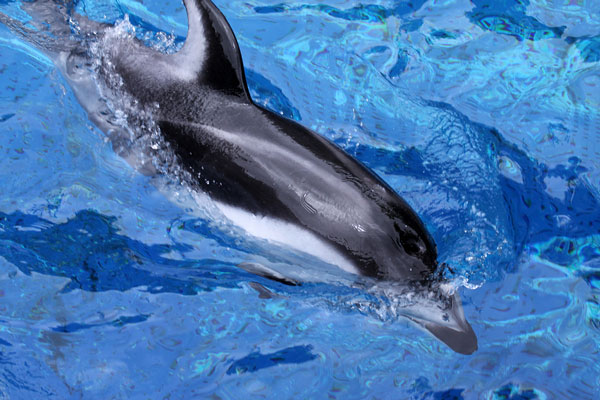Pacific White-Sided Dolphins

Find A Hotel in Los Cabos
Fantastic deals on hotels in Los Cabos with our booking partners. Amazing discounts on over 100 properties, instant reservation and user reviews/ratings to guarantee you get the hotel you want, when you want it. In many cases you PAY NOTHING now...check it out here!
The Pacific white-sided dolphin has three
colors. The chin, throat and belly are creamy white. The beak, flippers,
back, and dorsal fin are a dark gray. There are light gray patches on
the sides and a further light gray stripe running from above the eye to
below the dorsal fin where it thickens along the tail stock. A dark gray
ring surrounds the eyes.
The species is an average-sized oceanic
dolphin. Females weigh up to 150 kilograms (330 lb) and males 200
kilograms (440 lb) with males reaching 2.5 meters (8.2 ft) and females
2.3 meters (7.5 ft) in length. Pacific white-sided dolphins tend to be
larger than dusky dolphins. Females reach maturity at 7 years. The
gestation period is one year. Individuals live 40 years or more.
The Pacific white-sided dolphin is extremely
active and mixes with many of the other north Pacific cetacean species.
It readily approaches boats and bow-rides. Large supergroups are common
in the Baja; averaging more than 300 individuals. Prey is mainly
sardines, squid and mackerel. Members form a close-knit group and will
often care for a sick or injured dolphin. Animals that live in such big
social groups develop ways to keep in touch — research suggests that
each dolphin identifies itself by a unique name-whistle.